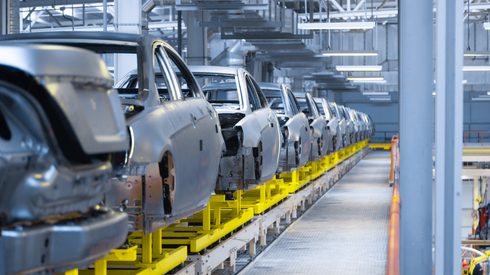Speaking on the sidelines of the e-mobility event MOVE 2024, which took place in London from June 19-20, several industry experts agreed that spot price volatility recently observed in several critical raw materials has prompted the adoption of holistic strategies to mitigate price risk while electric vehicle (EV) ecosystems are being built in western countries.
Presenters spoke on the hurdles that projects – across the entire EV supply chain – in the US and Europe face and discussed holistic strategies to mitigate exposure to price fluctuations including strategic partnerships, vertical integration and the increased use of financial tools, such as future contracts.
Building sustainable supply chains amidst the challenges
Western governments aim to build resilient and sustainable supply chains to meet their decarbonization targets, structural reforms and legislative initiatives have been key in advancing the process. But challenges remain on the horizon particularly when it comes to the procurement of the sustainable supply of a number of key commodities, such as lithium and cobalt, and the financing of domestic projects, presenters said during the event.
“At Umicore we have very strict policies to mitigate our exposure to metal price volatility. We apply a multi-strategy approach combining various hedging tools to manage metal price fluctuations more effectively, ensuring greater financial stability and predictability,” Tom Meulemans, business head of cobalt & precursors at Umicore, said in an interview with Fastmarkets on the sidelines of the event.
Belgium-headquartered Umicore manufactures cathode active materials for the lithium-ion battery industry.
Given the varying nature of battery metal markets, different metals require different tailored approaches – although these are not all necessarily currently applied at Umicore now, according to Meulemans.
For nickel as a base metal, one can mostly rely on the paper market and use financially settled futures contracts for hedging. This approach helps to protect against sudden price fluctuations, Meulemans said.
Less mature metal markets, such as cobalt and lithium, require a different strategy, Meulemans added.
“For instance, one could carefully manage its inventory levels to reduce exposure to price changes. By aligning inventory levels with market conditions and customer demand, one can minimize the financial impact of price swings. In practice, this could translate into matching physical sales and purchase volumes on the same quotational period,” Meulemans explained.
“Another option is to enter into contracts with customers that include pricing mechanisms to pass through changes in commodity prices. This allows adjusting sales prices based on changes in raw material stock, thereby transferring some of the price risk to customers,” he added.
Asked about the surge in open interest and on-exchange trading in cobalt and lithium future contracts, Meulemans said that since financially settled future contracts have become available to hedge exposure to cobalt and lithium prices, liquidity is indeed increasing in those contracts, making them a viable complementary hedging alternative going forward.
Strategic partnership, vertical integration across the EV supply chain
Delegates at the event discussed the strategic need for key partnerships and the competitive advantage that vertical integration could bring to the nascent EV ecosystem in western countries.
On this topic, Meulemans told Fastmarkets that strategic partnerships in the battery material industry are essential for securing supply chains, fostering innovation, managing costs, expanding market reach, ensuring sustainability, and mitigating risks.
Greg Bogie, commercial director at UK-based junior lithium refinery Green Lithium, also spoke on stage at MOVE 2024, highlighting the challenges of project financing due to the current price environment for lithium as well as the pivotal role that governments need to play when driving the localization of supply chains.
Vertical integration would allow companies such as Green Lithium to increase its competitiveness, according to Bogie.
“This is a large shift, but a necessary one. Encompassing mining, processing, battery production and OEMs (original equipment manufacturers) coming together to ‘vertically integrate’ [will] provide western economies with a greater equity in the lithium market and give pricing at least a chance to ‘establish’ outside of the CIF China market,” he told Fastmarkets on the sidelines of the event.
Fastmarkets’ Fast Forward podcast provides invaluable insights for industry professionals, metal traders and battery material buyers. For more in-depth discussions and to stay updated on the latest trends, be sure to listen to the full episode and subscribe to the Fast Forward podcast.






